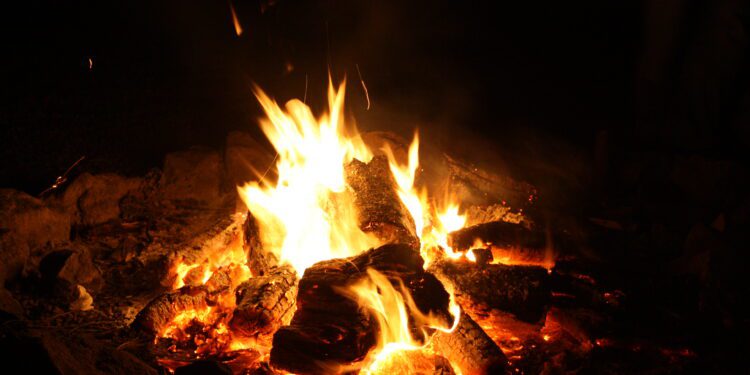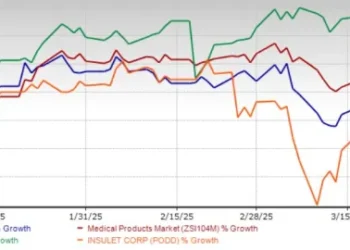When U.S. troops were deployed to Iraq in the early 2000s, few could have imagined that the very air they breathed would leave behind the most enduring wounds.
Amid the chaos of war, U.S. military bases often lacked proper waste management infrastructure. In response, the military adopted a controversial solution: burn pits — open-air combustion sites used to dispose of everything from medical waste and vehicle parts to plastics, electronics, and even human waste.
At first glance, these fires were simply a logistical necessity in combat zones. But for many who served nearby, they became an invisible threat — one whose effects are still surfacing decades later in the form of chronic illness and cancer.
A recent cohort study examining active-duty service members who were deployed to Iraq adds new evidence to what veterans and their families have long feared: exposure to burn pits is associated with an increased risk of developing cancer. The findings demand a closer look at the relationship between toxic environmental exposures and long-term health outcomes in military populations.
What Were Burn Pits — and Why Were They Dangerous?
Burn pits were a common fixture at U.S. military installations throughout Iraq and Afghanistan. At their peak, some pits operated around the clock, sending thick plumes of black smoke into the desert air. Materials burned included chemicals, solvents, petroleum products, paint, tires, and discarded equipment — many of which released carcinogenic compounds like benzene, dioxins, and polycyclic aromatic hydrocarbons.
Service members lived, worked, and slept in close proximity to these pits. Many have since reported respiratory issues, fatigue, rashes, and — in some cases — aggressive cancers developing at a young age. While anecdotal for years, these reports are now being substantiated by epidemiological research and long-term health surveillance.
The Cohort Study: Linking Exposure to Elevated Cancer Risk
In the latest study — a large-scale, longitudinal cohort analysis — researchers tracked a population of active-duty service members who were deployed to Iraq between 2003 and 2011. The cohort was divided into two primary groups:
- Those stationed in close proximity to burn pit sites
- Those stationed at bases with little or no burn pit activity
Researchers controlled for variables such as age, gender, service branch, smoking history, and pre-deployment health status. Over the course of several years, the data revealed a statistically significant increase in the incidence of cancer among the exposed group.
The most commonly observed cancers included:
- Lung cancer
- Hematologic malignancies (like leukemia and lymphoma)
- Head and neck cancers
- Rare gastrointestinal cancers
While the study stopped short of establishing direct causation — a complex threshold in environmental epidemiology — it clearly demonstrated a strong association between exposure and disease incidence.
A Slow March Toward Recognition
For years, veterans voiced concerns about the health effects of burn pits, but their reports were met with skepticism or bureaucratic inertia. Unlike battlefield injuries, the toxic legacy of burn pits was invisible and delayed. That made it easier to deny — or delay — responsibility.
It wasn’t until public advocacy intensified, supported by mounting scientific studies, that the issue gained national attention. The tipping point came with the 2022 passage of the Honoring Our PACT Act, a landmark piece of legislation that expanded health benefits for veterans exposed to toxic substances, including burn pit emissions.
Still, for many veterans, this acknowledgment came after diagnoses were made — or lives were lost.
Medical Uncertainty and the Long Tail of War
One of the greatest challenges in researching burn pit exposure is the long latency period of many cancers. What begins as a subtle cough in a 35-year-old veteran may not become lung cancer until a decade later. And in the absence of early biomarkers or definitive diagnostic tests, proving exposure as the cause becomes a legal and scientific labyrinth.
That uncertainty is further complicated by incomplete exposure records. Many bases did not monitor air quality consistently. Others lacked documentation of what was burned and how frequently. Veterans themselves were rarely given protective gear or informed about potential risks.
In this context, cohort studies become essential tools. By tracking service members across time and comparing groups based on deployment location, researchers can start to build a clearer picture of environmental health outcomes tied to military service.
The Bigger Picture: Environmental Exposure in Military Medicine
Burn pits are not the first — nor likely the last — environmental hazard linked to military operations. From Agent Orange in Vietnam to depleted uranium in the Gulf War, the U.S. has a long and complex history of toxic exposure among its armed forces.
What makes burn pits unique, however, is the sheer scale of exposure and the variety of materials burned. And unlike other military exposures, burn pit use was widespread even after concerns about toxicity had already been raised.
This raises ethical questions about how decisions are made in combat logistics, and whether enough is done to protect service members from long-term, non-combat risks.
A Call for Lifelong Monitoring and Research
One of the key recommendations to emerge from recent research is the need for lifelong health monitoring of exposed veterans. Cancer risk doesn’t disappear after discharge — it evolves with time. Early detection, access to screenings, and transparent communication about individual risk levels are critical.
There’s also a need for more granular data collection: identifying which materials produce the most harmful emissions, and developing risk profiles based on proximity, duration of exposure, and personal health history.
Equally important is a cultural shift in how the military and Veterans Affairs system view exposure-related illness — not as isolated incidents, but as systemic consequences of operational decisions.
Final Thoughts
The story of burn pits is not just a story about war. It is a story about what we ask of those who serve — and what we owe them in return.
Long after the last flame was extinguished in the sands of Iraq, the embers of exposure continue to burn in the lungs and lives of those who stood nearby. They did not sign up to inhale toxic smoke. They signed up to serve their country.
Now it is the country’s turn to serve them — with clear answers, continuous research, and comprehensive care.















